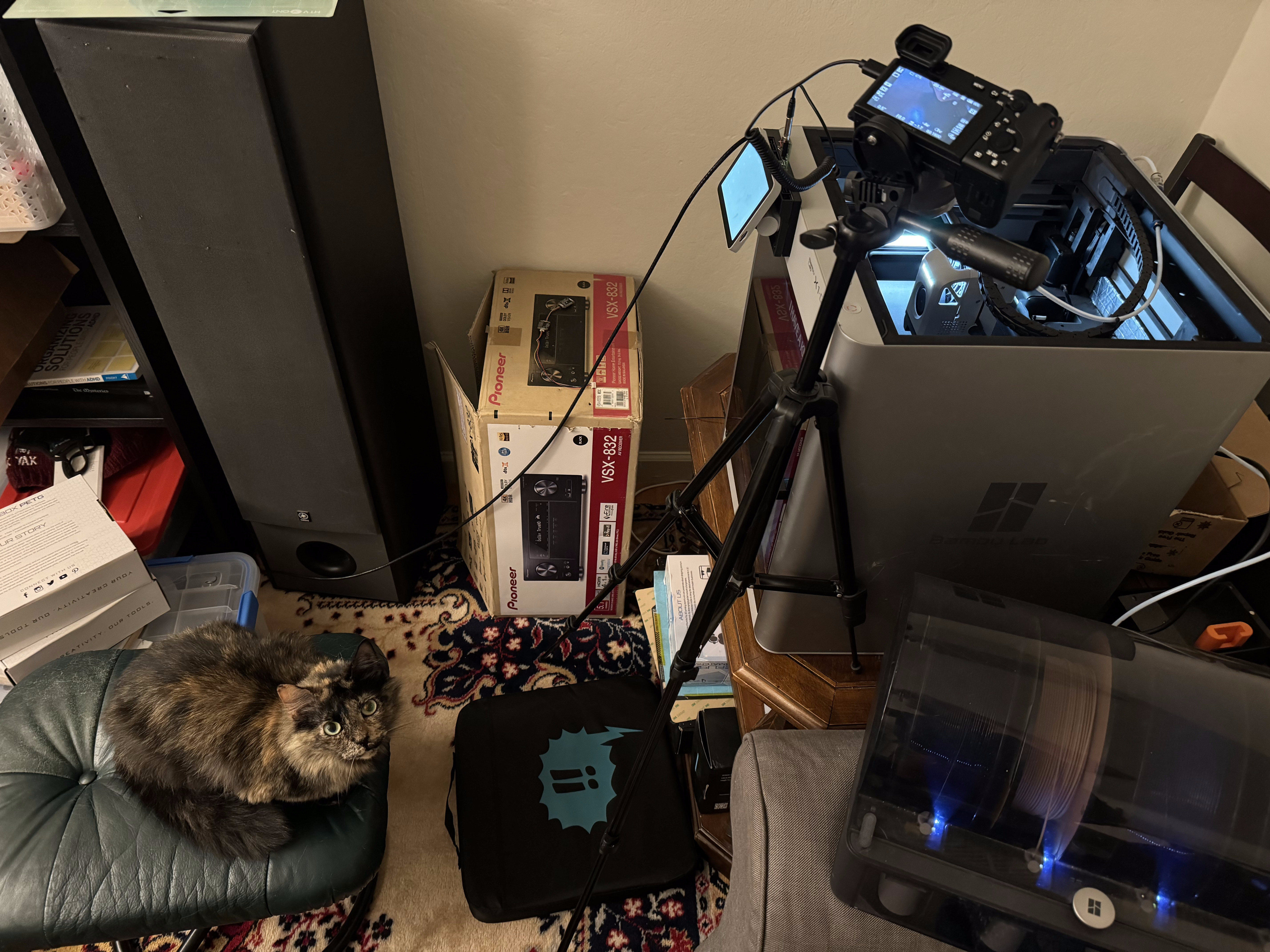One of the goals of this project has been to support plugins to the rectangular GPIO headers on the top. Early prototypes of the X1Plus Expansion Board have FT2232H, but sooner or later I'll be changing to FT4232H to make all four ports homogeneous. We have three plugin boards that we're working on right now:
- X1P-004: a WS2812B-style LED strip level shifter board
- X1P-005: a compact light stack, beeper, and button board
- X1P-006: a camera shutter release trigger board
X1P-006-A01 (the first rev) came back a few weeks ago, and we identified some changes needed: new 2.5mm connectors that had *all* the pins connected (d'oh!), pinout changes for safe initialization state on the FTDI, etcetera. To validate the changes before we fab out X1P-006-B01, I hacked up an X1P-006-A01 to match the new specification, and bit the bullet and upgraded my ancient Sony NEX-C3 to a fancy new-to-me used a6600. Of course, the first thing I did with an $800 camera was to connect it to a piece of experimental electronics dangling off of a 3D printer!

(Peanut is the official First Layer Inspector of the X1Plus project.)
I spent a long while writing some software to glue G-code actions to GPIO outputs on the FTDI -- like, a week -- and took two time lapses: one with the printer's built-in chamber monitoring camera, and one with my a6600, using the X1Plus Expansion Board. You can compare them for yourself, if you like:
- The printer's built in time lapse looks about like you expect. Grainy, boring.
- The X1Plus timelapse with my a6600 really shows off what you can get with some decent glass and a different angle -- and this is just my first attempt at it!
I'm pretty excited about how this came out so far. This is the sort of validating experiment that tells me that this might be worth doing!
Here's the bit where I'm supposed to tell you that if you think you might want one of these, you need to click the subscribe button on Crowd Supply. The launch of this project depends on enough of you showing that you actually would buy one!
 Joshua Wise
Joshua Wise
Discussions
Become a Hackaday.io Member
Create an account to leave a comment. Already have an account? Log In.